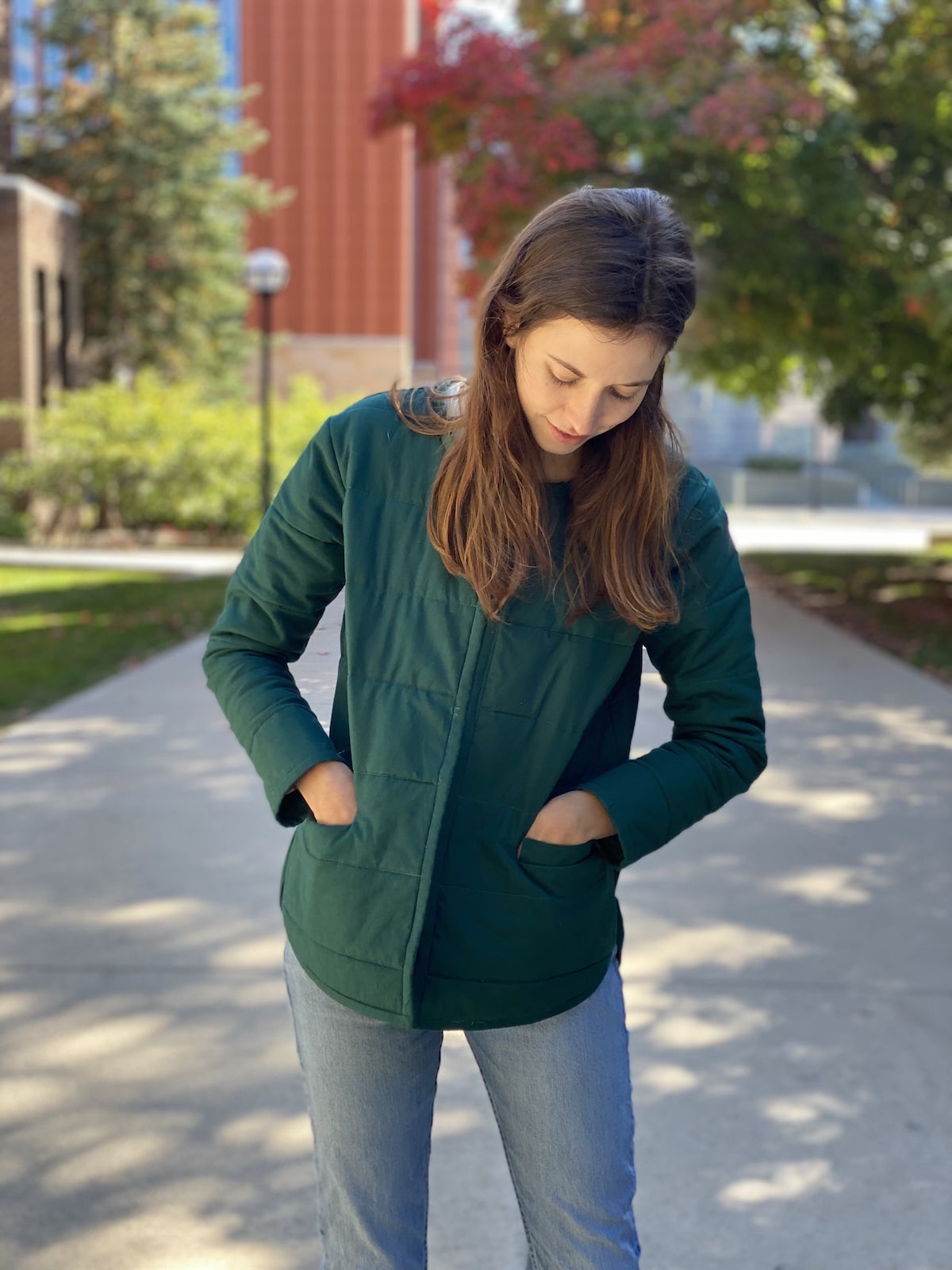Okay, so you may have noticed that quilted jackets seem to be the thing to sew this year. I’ve had the pattern for years now, but it sewing a Tamarack Jacket seemed like such a big project so I kept putting it off. Finally after booking a fall trip to the Midwest and realizing I don’t have the perfect cool weather jacket, I decided to sew my first quilted jacket. It ended up being a totally reasonable project and now I am fully on board with this quilt coat trend. I’m already scheming up ideas for my next one.

The fabric
I’ve seen a bunch of amazing quilted jackets on Instagram where people take an existing quilt and sew it into a jacket. The Tamarack pattern would absolutely work for that type of project because it outlines directions for using a pre-quilted fabric.
I’ll be jumping on the multi-colored quilted pattern jacket train eventually, but for my first version I wanted to keep it simple and solid. I went with my absolute favorite quilting cotton – Kona cotton. It’s super soft, comes in hundreds of colors, and perfect for this pattern.
If you’re not using pre-quilted fabric you’ll also need a batting. I went with a wool batting because I wanted extra warmth – this is the brand I used. It ended up being a bit bulkier than I had envisioned, but it pays off in how warm it is. Cotton batting is another option if you’re looking for something a bit lighter and more breathable. I typically buy this cotton batting.
Tamarack Jacket Pattern
It might be surprising – but this is actually a pretty easy pattern to make. I’ve found that Grainline Studio patterns are consistently well drafted and easy to follow. The pattern consists of three main pieces – front, back, and sleeves. There are no collars, facings, plackets required. There are a few quilting techniques that may be new to you if you’re not a quilter, but the pattern walks through them in a beginner friendly way.

I chose to make a size 0, which is my typical size in Grainline Studio patterns. Next time, I will be sizing up. The bodice fits me, but the sleeves are a bit tight and bulky. I can’t really wear any of my thick sweaters underneath If I hadn’t used such a thick batting it may have fit better.
Sewing the Tamarack Jacket
Overall, the simplicity of the jacket style makes it a fairly straightforward project. The most difficult part for me was the welt pocket. I used some scrap fabric to practice the technique before cutting into my actual jacket. This helped me ensure that the pockets came out exactly as I wanted.
If you’re new to quilting, you may find the binding or quilting challenging. Personally, I find those techniques to be much more enjoyable than adding a collar or hemming. If you’re nervous about it, I would definitely recommend practicing both quilting and binding on a small piece of your fabric and batting. A walking foot will definitely help if you’re experiencing difficulties.
The jacket calls for hook and eye closures. Because I live in a really mild climate, I never zip or close my jackets. I opted to skip adding any closures for the sake of ease and time. It probably looks a bit unfinished, but I don’t really mind.

Final notes
The tamarack jacket is an A+ pattern. It’s surprisingly straightfowrad to make and I imagine it’s classic design will be a staple in my closet for years to come. I plan on making a trendier, more quilt-y take on the pattern in the future, but for now I love my simple solid version. If you’re thinking of hopping on the quilted jacket train, I put together a Pinterest board with some inspiration.

